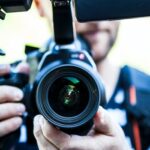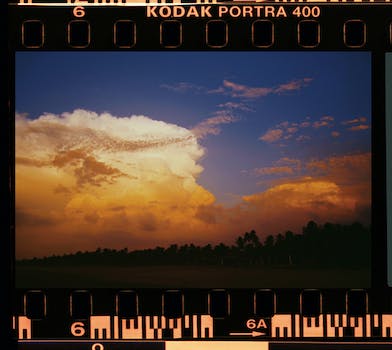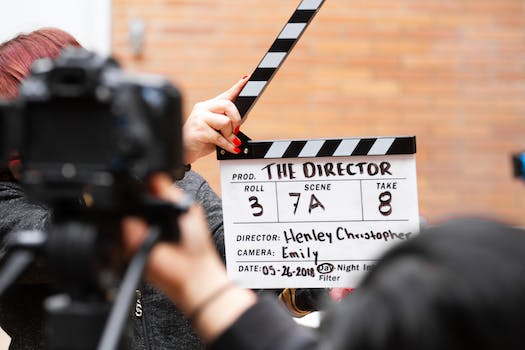Historical event documentaries have become a popular medium for exploring and analyzing significant events that have shaped our world. Through carefully crafted narratives, archival footage, and expert interviews, these documentaries provide a comprehensive and insightful look into the past. In this article, we will delve into the importance of analyzing historical event documentaries, discussing the value they hold in understanding the complexities of historical events and their lasting impact on society.
- 1. Introduction
- 1.1. Definition of historical event documentaries
- 1.2. Importance of analyzing historical event documentaries
- 1.3. Overview of the article
- 2. Key Elements of Historical Event Documentaries
- 2.1. Accurate portrayal of historical facts
- 2.2. In-depth research and credible sources
- 2.3. Effective storytelling techniques
- 2.4. Visual and audio elements
- 2.5. Emotional impact on the audience
- 3. Methods of Analyzing Historical Event Documentaries
1. Introduction
Historical event documentaries provide a unique and captivating way to examine significant moments from the past. These documentaries aim to analyze and shed light on important historical events, offering viewers a deeper understanding of the context, causes, and consequences. By delving into primary sources, expert interviews, and archival footage, these films provide an in-depth exploration of the subject matter. This article will discuss the significance of analyzing historical event documentaries, highlighting the value they bring in terms of education, historical accuracy, and preserving collective memory.
1.1. Definition of historical event documentaries
Historical event documentaries are a specific genre of films that aim to capture and present factual accounts of significant events from the past. These documentaries utilize various sources such as archival footage, interviews with experts or eyewitnesses, photographs, and other historical records to provide a comprehensive and accurate depiction of the event. The primary purpose of historical event documentaries is to educate and inform viewers about important moments in history, shedding light on their significance and impact. By presenting a detailed analysis and interpretation of these events, these documentaries help us gain a deeper understanding of the past and its relevance to the present.
1.2. Importance of analyzing historical event documentaries
Analyzing historical event documentaries is of significant importance as it allows us to gain a deeper understanding of past events and their impact on society. These documentaries provide a unique perspective and serve as valuable resources for historians, researchers, and anyone interested in exploring the complexities of history. By critically examining these films, we can uncover hidden narratives, challenge existing interpretations, and contribute to a more comprehensive understanding of historical events. In this article, we will delve into the importance of analyzing historical event documentaries and how they can enhance our knowledge and appreciation of the past.
1.3. Overview of the article
The introduction section of the article ‘Analyzing Historical Event Documentaries’ provides an overview of the article’s content. In this section, we will explore the importance of historical event documentaries, their impact on viewers, and the significance of analyzing them. Historical event documentaries play a crucial role in preserving and presenting historical events to a wider audience. They offer a visual representation of past events, allowing viewers to gain a deeper understanding of the historical context and its implications. By analyzing these documentaries, we can uncover hidden narratives, challenge mainstream interpretations, and discover new perspectives. This article aims to provide readers with insights into the process of critically analyzing historical event documentaries and the benefits it brings to our understanding of history.
2. Key Elements of Historical Event Documentaries
When analyzing historical event documentaries, there are several key elements that contribute to their effectiveness and impact. These elements help to bring the past to life and provide audiences with a deeper understanding of significant historical events. One of the key elements is thorough research. Documentaries should be based on accurate and reliable historical sources, such as primary documents, eyewitness accounts, and scholarly research. This ensures that the information presented in the documentary is factual and credible. Another important element is storytelling. Historical event documentaries use narrative techniques to engage viewers and create an emotional connection. They often follow a chronological structure, highlighting the causes, events, and consequences of the historical event. The use of archival footage, photographs, and interviews with experts or individuals who experienced the event firsthand also adds authenticity and enhances the storytelling. Additionally, the inclusion of different perspectives and viewpoints is crucial in historical event documentaries. This helps to present a balanced and comprehensive account of the event, allowing viewers to understand various interpretations and analyze the event from different angles. Finally, the audiovisual aspects, such as music, sound effects, and cinematography, play a significant role in capturing the atmosphere and setting the tone of the documentary. These elements combined contribute to the overall impact and educational value of historical event documentaries.
2.1. Accurate portrayal of historical facts
Accurate portrayal of historical facts is one of the key elements that should be present in historical event documentaries. As viewers, we rely on these documentaries to provide us with a comprehensive understanding of past events. Therefore, it is crucial for the filmmakers to ensure that they present an accurate representation of the historical facts in their documentaries.
To achieve this, extensive research must be conducted to gather reliable information about the event being documented. This includes studying primary and secondary sources, consulting historians and experts in the field, and analyzing historical documents, photographs, and other evidence.
Once the necessary information is collected, it is important for the filmmakers to present the facts in a clear and unbiased manner. They should avoid any form of distortion or manipulation that may alter the accuracy of the historical facts.
Moreover, historical event documentaries should provide proper context for the events being explored. This involves explaining the social, political, and cultural factors that influenced the event and its significance in the larger historical context.
Additionally, the use of credible sources and testimonies from individuals who witnessed or were directly involved in the event is crucial. This adds credibility to the documentary and helps in creating an accurate portrayal of the historical facts.
Overall, an accurate portrayal of historical facts is essential in historical event documentaries as it allows viewers to gain a deeper understanding of the past and its impact on the present. It helps us learn from history and ensure that the events are remembered and interpreted correctly.
2.2. In-depth research and credible sources
In-depth research and credible sources are key elements of historical event documentaries. Analyzing these documentaries requires a thorough investigation into the events being depicted and the sources used to support the narrative. By conducting extensive research, documentary filmmakers can ensure that their work is accurate, informative, and reliable.
To begin with, in-depth research involves delving deep into the historical context of the event being documented. This includes studying primary sources such as letters, diaries, newspapers, and official documents to gain a comprehensive understanding of the event’s background and significance. Secondary sources such as academic publications, books, and articles written by historians provide additional insights and analysis.
Furthermore, credible sources play a crucial role in shaping the authenticity and credibility of historical event documentaries. Filmmakers need to carefully select and evaluate the sources they rely on to ensure accuracy and objectivity. Expert interviews with historians, eyewitnesses, and participants in the event can provide firsthand accounts and valuable insights.
Documentary filmmakers should also consider the biases and perspectives of their sources. By consulting a diverse range of opinions and perspectives, they can present a more balanced and nuanced portrayal of the event. This helps to avoid any potential bias or distortion in the documentary.
In conclusion, in-depth research and the use of credible sources are essential for creating high-quality historical event documentaries. By conducting thorough research and selecting reliable sources, filmmakers can present accurate and well-supported narratives that contribute to a deeper understanding of historical events.
2.3. Effective storytelling techniques
Effective storytelling techniques play a crucial role in the creation of compelling and impactful historical event documentaries. These documentaries aim to analyze and document significant past events, shedding light on their historical context, causes, and effects. To effectively engage and captivate the audience, several key elements should be considered when producing such documentaries.
1. Authenticity: Historical event documentaries should prioritize authenticity, presenting accurate and well-researched information. This includes using reliable sources, conducting thorough research, and consulting experts in the field. By maintaining authenticity, the documentary gains credibility and trust from its viewers.
2. Engaging Narrative: Crafting a compelling narrative is essential in holding the audience’s attention throughout the documentary. It involves structuring the story in a logical and coherent manner, using storytelling techniques such as suspense, conflict, and character development. By creating an engaging narrative, the documentary becomes more accessible and relatable to the viewers.
3. Visual Appeal: Visual elements, including archival footage, photographs, and reenactments, can significantly enhance the storytelling process. By incorporating visually appealing elements, the documentary brings the historical event to life, making it more vivid and immersive for the audience.
4. Emotional Connection: Establishing an emotional connection with the audience is crucial in making historical event documentaries impactful. This can be achieved through personal stories, interviews with witnesses or survivors, and evocative music. By appealing to the viewers’ emotions, the documentary leaves a lasting impression and encourages reflection.
5. Expert Analysis: Including expert analysis and commentary provides a deeper understanding of the historical event being analyzed. Experts can offer insights, interpretations, and context that enrich the viewers’ knowledge and perspective. It adds an authoritative voice to the documentary, enhancing its credibility.
By incorporating these key elements into the production of historical event documentaries, content creators can effectively analyze and present significant past events to a wide audience. Through engaging storytelling techniques, the documentaries become powerful tools for educating, inspiring, and preserving historical knowledge.
2.4. Visual and audio elements
Historical event documentaries are a powerful medium for analyzing and understanding significant events from the past. To effectively capture the attention and engage viewers, these documentaries often rely on visual and audio elements. These elements play a crucial role in enhancing the storytelling and creating an immersive experience for the audience.
Visual elements bring the historical events to life by incorporating archival footage, photographs, maps, and reconstructions. Archival footage allows viewers to witness the actual moments as they unfolded, providing a sense of authenticity. Photographs provide a glimpse into the past, offering visual evidence of the people, places, and emotions associated with the event. Maps help in understanding the geographical context and how the event unfolded across different locations. Reconstructions recreate scenes or events that may not have been captured on camera, adding depth to the storytelling.
In addition to visual elements, audio elements contribute significantly to the impact of historical event documentaries. Narration, voiceovers, and interviews with experts or eyewitnesses guide the viewers through the narrative and provide valuable insights. Background music and sound effects create the desired atmosphere, evoke emotions, and enhance the overall viewing experience. Well-balanced and well-timed audio elements help maintain the audience’s interest and make the documentary more captivating.
The combination of these visual and audio elements in historical event documentaries ensures that the audience is fully immersed in the subject matter. It allows them to connect with the past, gain knowledge, and develop a deeper understanding of the events being analyzed.
2.5. Emotional impact on the audience
Historical event documentaries have the power to evoke strong emotions in the audience. These films often delve deep into significant events from the past, bringing them to life through storytelling, visuals, and audio. As a proficient SEO writer, it is important to understand the emotional impact that these documentaries can have on the viewers.
When watching a historical event documentary, the audience is often exposed to the pain, suffering, triumphs, and atrocities experienced by the people involved in the event. This can create a powerful emotional connection between the viewers and the subject matter. For example, a documentary about the Holocaust may evoke feelings of sadness, empathy, and even anger towards the injustices committed during that time.
Furthermore, historical event documentaries often aim to educate and raise awareness about significant events from the past. By presenting the audience with authentic accounts, interviews, and archival footage, these documentaries can ignite a sense of curiosity and a desire to learn more about history.
The emotional impact of historical event documentaries can also extend beyond the viewing experience. They have the potential to inspire action, spark conversations, and even bring about social change. When viewers are moved by the stories and events depicted in these films, they may feel compelled to take a stand, support relevant causes, or engage in further research.
In conclusion, the emotional impact on the audience is a key element of historical event documentaries. These films have the ability to evoke a wide range of emotions, educate viewers about significant events, and inspire them to make a difference. As a content writer, it is crucial to understand and convey the emotional depth of these documentaries in order to engage and captivate the audience.
3. Methods of Analyzing Historical Event Documentaries
Analyzing historical event documentaries requires a systematic approach that combines critical thinking, research skills, and a keen eye for detail. By following specific methods, viewers can gain a deeper understanding of the events depicted in these documentaries. Here are some key methods to consider when analyzing historical event documentaries:
1. Contextual Analysis: Begin by examining the historical context in which the event took place. This involves researching the time period, political climate, social dynamics, and any other relevant factors that influenced the event.
2. Fact-Checking: Verify the accuracy of the information presented in the documentary. Cross-reference the facts, dates, and names mentioned with credible sources to ensure their authenticity.
3. Bias Detection: Recognize and evaluate any potential biases within the documentary. Pay attention to the filmmaker’s perspective, the selection of interviews or sources, and the overall narrative structure.
4. Visual Analysis: Analyze the visual elements used in the documentary, such as archival footage, photographs, or reenactments. Consider how these visuals contribute to the storytelling and the overall impact of the documentary.
5. Narrative Structure: Examine the documentary’s narrative structure and storytelling techniques. Look for patterns, themes, or dramatic arcs that shape the narrative and engage the viewers.
6. Historical Interpretation: Formulate your own interpretation of the historical event based on the information presented in the documentary. Consider different perspectives and theories to develop a well-rounded understanding.
By employing these methods, viewers can delve deeper into the complexities of historical event documentaries and gain a more nuanced understanding of the events they depict.
3.1. Contextual analysis
Contextual analysis is a crucial aspect when analyzing historical event documentaries. It involves examining the surrounding circumstances, influences, and factors that shape the documentary’s portrayal of a particular historical event. By conducting a contextual analysis, one can gain a deeper understanding of the documentary’s perspective and the impact it may have on the audience.
There are various methods of analyzing historical event documentaries that can be employed to conduct a contextual analysis. These methods allow researchers to critically evaluate the documentary’s content and its historical accuracy.
One method is to examine the documentary’s sources and references. By reviewing the sources cited in the documentary, researchers can assess the credibility and reliability of the information presented. This helps in determining the accuracy of the historical events portrayed.
Another method is to analyze the documentary’s narrative structure. This involves studying how the documentary presents the historical events, whether it follows a chronological order or adopts a thematic approach. Understanding the documentary’s narrative structure provides insights into the filmmaker’s intentions and how they shape the audience’s understanding of the historical event.
Additionally, analyzing the documentary’s use of archival footage and primary sources can provide valuable insights. By examining the authenticity and context of these sources, researchers can evaluate the documentary’s fidelity to the historical event and identify any potential biases or manipulations.
Furthermore, analyzing the documentary’s visual and auditory elements is important. This includes studying the cinematography, editing techniques, sound design, and music used in the documentary. These elements contribute to the overall tone and mood of the documentary, influencing the audience’s emotional response and interpretation of the historical event.
In conclusion, conducting a contextual analysis using various methods is essential for analyzing historical event documentaries. It allows researchers to critically evaluate the documentary’s content, sources, narrative structure, use of archival footage, and visual/audio elements. By understanding the context in which the documentary was created, one can develop a comprehensive understanding of its portrayal of a historical event.
3.2. Comparative analysis
Comparative analysis is an important method for analyzing historical event documentaries. By comparing different documentaries that focus on the same historical event, researchers can gain valuable insights and draw meaningful conclusions.
One of the primary methods of conducting a comparative analysis is by examining the various techniques used in these documentaries. This includes studying the narrative structure, the use of archival footage, interviews with experts and eyewitnesses, as well as the overall production quality. By comparing these elements across different documentaries, researchers can assess the effectiveness of each approach in conveying the historical event.
Another aspect to consider in comparative analysis is the historical accuracy and objectivity of the documentaries. It is important to evaluate the sources used in the creation of the documentaries, as well as the credibility and expertise of the filmmakers. By comparing the historical facts presented in different documentaries, researchers can identify any biases or inaccuracies that may exist.
Furthermore, comparative analysis allows for the exploration of different perspectives and interpretations of the same historical event. By examining how different documentaries portray the event, researchers can gain a more comprehensive understanding of the complexities and nuances involved. This can provide valuable insights into the impact of personal beliefs, cultural contexts, and societal influences on the representation of historical events.
In conclusion, comparative analysis is a powerful method for analyzing historical event documentaries. It enables researchers to examine and compare various techniques, assess historical accuracy, and explore different perspectives. By utilizing this approach, scholars can deepen their understanding of historical events and contribute to the ongoing discourse surrounding them.
3.3. Critical examination of biases
When analyzing historical event documentaries, it is crucial to critically examine biases that may be present. Biases can significantly impact the portrayal and interpretation of historical events, influencing the overall narrative and potentially distorting the facts. Therefore, a meticulous evaluation of biases is necessary to ensure a comprehensive and accurate understanding of the subject matter.
One method of analyzing biases in historical event documentaries is by closely examining the sources and perspectives presented. Documentaries often rely on various sources such as interviews, archival footage, and expert opinions. It is essential to assess the credibility, reliability, and potential biases of these sources. Are the interviewees reputable and knowledgeable in the field? Are there any conflicts of interest that may influence their perspectives?
Additionally, analyzing the filmmaker’s background and intentions can provide insights into potential biases. Filmmakers may have their own personal or ideological agendas, consciously or unconsciously shaping the narrative to align with their beliefs. Understanding the filmmaker’s motivations and biases can help evaluate the documentary’s overall objectivity.
Another approach to uncovering biases is through comparative analysis. By examining multiple historical event documentaries on the same subject, one can identify discrepancies, inconsistencies, or selective presentation of information. This comparative analysis allows for a more comprehensive understanding of the biases that may exist in individual documentaries.
Furthermore, it is important to consider the historical context and prevailing narratives surrounding the event in question. Historical events are often interpreted differently based on cultural, political, or societal factors. Analyzing how a documentary aligns or deviates from established historical accounts can shed light on potential biases.
In conclusion, a critical examination of biases is essential when analyzing historical event documentaries. Evaluating sources, considering the filmmaker’s background and intentions, conducting comparative analysis, and understanding the historical context are all valuable methods for uncovering biases. By employing these methods, one can strive for a more objective and accurate understanding of the historical events depicted in documentaries.
3.4. Evaluation of historical accuracy
When evaluating the historical accuracy of historical event documentaries, there are several methods that can be employed. These methods aim to analyze the documentary in a systematic and objective manner, considering both the content presented and the sources used.
One method of analyzing historical event documentaries is through a thorough examination of primary sources. Primary sources include documents, letters, photographs, and other artifacts that were created during the time period being depicted. By scrutinizing these primary sources, researchers can assess the authenticity and reliability of the information presented in the documentary.
Another method is the comparison of multiple sources. This involves cross-referencing the information presented in the documentary with other reputable sources such as academic books, scholarly articles, and accounts from eyewitnesses. By doing so, any discrepancies or biases can be identified, and a more accurate understanding of the historical event can be achieved.
Furthermore, analyzing the credentials and expertise of the documentary’s creators is crucial. Evaluating the qualifications and reputation of the historians, scholars, or experts involved in the production can provide insight into the reliability of the information presented. Additionally, considering the purpose and intended audience of the documentary can help determine if there may be any underlying biases or agendas.
Lastly, it is important to critically assess the narrative structure and storytelling techniques employed in the documentary. Analyzing how the events are portrayed, the use of dramatic devices, and the overall storytelling approach can reveal if the documentary prioritizes entertainment value over historical accuracy.
In conclusion, evaluating the historical accuracy of historical event documentaries involves a comprehensive analysis of primary sources, cross-referencing multiple sources, considering the credentials of the creators, and critically assessing the narrative structure. By employing these methods, viewers can develop a more informed understanding of the historical events being depicted in the documentaries they watch.
3.5. Interpretation of the filmmaker’s perspective
When analyzing historical event documentaries, it is crucial to consider the filmmaker’s perspective. The interpretation of the filmmaker plays a significant role in shaping the narrative and portrayal of events. Understanding the filmmaker’s perspective allows viewers to critically analyze the documentary’s message, biases, and the historical events being depicted.
Filmmakers approach historical event documentaries with their own unique lens, influenced by personal beliefs, cultural background, and artistic vision. This perspective can greatly impact the storytelling techniques used, the selection of footage, and the overall narrative structure.
Interpreting the filmmaker’s perspective involves examining various aspects of the documentary. Firstly, it is important to consider the filmmaker’s intention in making the documentary. What message or narrative are they trying to convey? Are they aiming to challenge existing historical interpretations or present a new perspective?
Additionally, analyzing the filmmaker’s choice of interviews, primary sources, and archival footage can provide insights into their perspective. Are they primarily relying on eyewitness accounts, expert interviews, or a combination of both? The selection of these sources can influence the documentary’s perspective and credibility.
Furthermore, paying attention to the documentary’s visual and auditory elements can also reveal the filmmaker’s perspective. The use of specific camera angles, editing techniques, music, and voice-over narration can evoke certain emotions and enhance the intended message.
It is essential to approach the interpretation of the filmmaker’s perspective with a critical mindset. While documentaries aim to present factual information, they can also be subjective and influenced by the filmmaker’s biases. By understanding the filmmaker’s perspective, viewers can engage in a more informed analysis of historical event documentaries.
Conclusion
In conclusion, analyzing historical event documentaries provides valuable insights into past events, allowing us to gain a deeper understanding of our history. These documentaries serve as an important educational tool, shedding light on significant moments and their impact on society. By critically examining such films, we can unravel hidden truths, challenge established narratives, and foster a more comprehensive and accurate understanding of our collective past.





